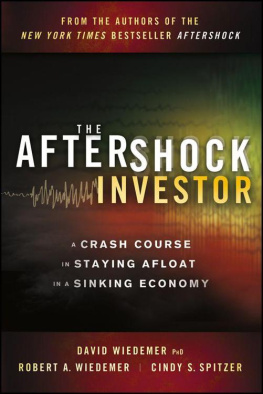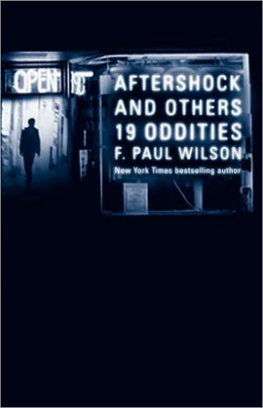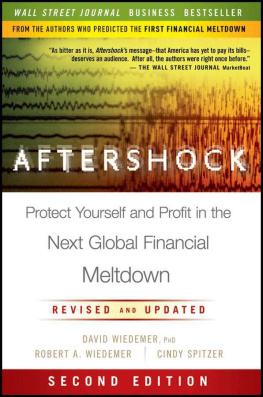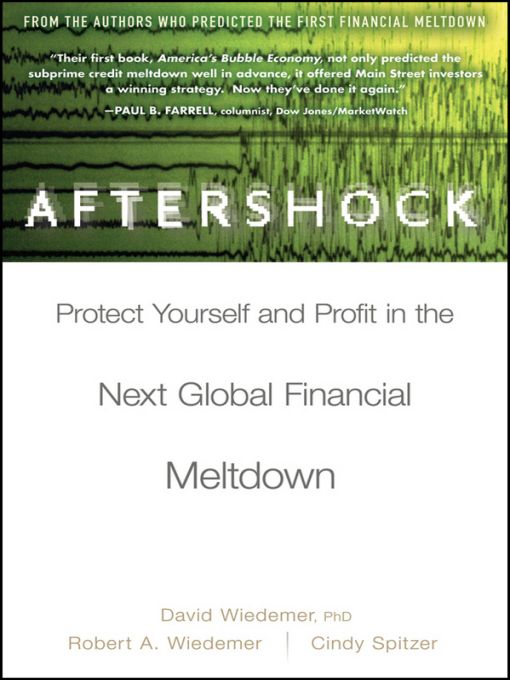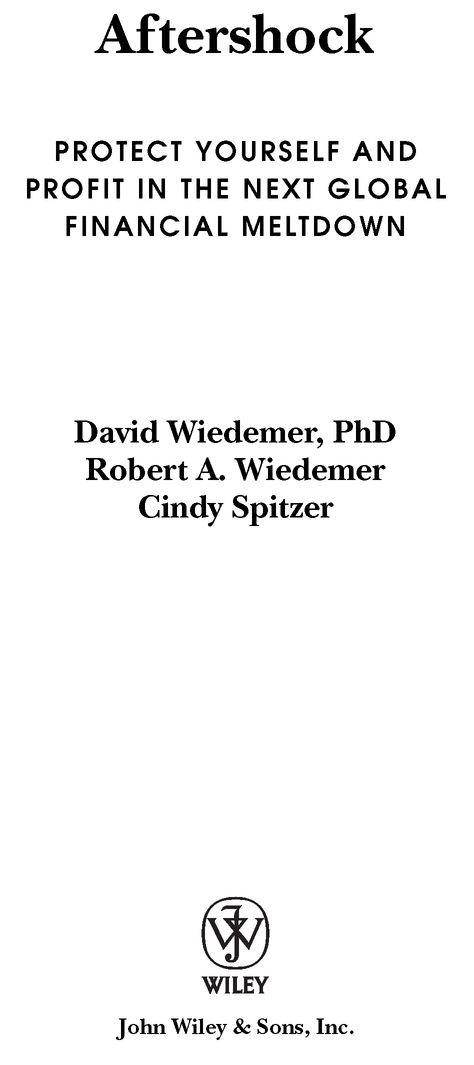Table of Contents
Executive Summary
What Is a Bubble?
An asset value that temporarily booms and eventually busts, based on changing investor psychology, rather than underlying, fundamental economic drivers that are sustainable over time.
What Is a Bubble Economy?
An economy that grows in a virtuous upward spiral of multiple rising bubbles (real estate, stocks, private debt, dollar, and government debt) that interact to drive each other up, and that will inevitably fall in a vicious downward spiral as each falling bubble puts downward pressure on the rest, eventually pulling the economy down.
What Is the Bubblequake?
Phase I of the popping of the bubble economy, including the fall of the real estate bubble, private debt bubble, stock market bubble, and discretionary spending bubble.
What Is the Aftershock?
Phase II of the popping of the bubble economy. Just when many people think the worst is over, next comes the Aftershock, when the dollar bubble and the government debt bubble will burst.
Acknowledgments
The authors thank John Silbersack of Trident Media Group and John Wiley & Sons editors David Pugh and Laura Walsh for supporting this book. They also want to thank John Douglas for his very special role in making this book a reality.
David Wiedemer
I thank my co-authors Bob and Cindy for being indispensable in the writing of this book. Without them, this book would not have been published, and if written, would have been inaccessible for most audiences. I also thank Dr. Rod Stevenson for his long -term support of the foundational work that is the basis for this book, which hopefully will be the second of many. I also thank Ruth Pritchard for her review of the manuscript. And I am especially grateful to my wife Betsy and son Benson for their on-going support in what has been an often arduous and trying process.
Robert Wiedemer
I, along with my brother, want to dedicate this book to our father, the original author in the family, who died earlier this year. We also want to thank our brother Jim for his lifelong support of the ideas behind this book and our mother for inspiring us both with the joy in discovering the world and writing about it. I thank Ron Everett, my business associate, for his enthusiastic support of this project. I also want to thank Stan Goldstein, Bradley Rosenberg, Phil Gross, and Michael Lebowitz for their support and help in reviewing this book. I am also grateful to Weldon Rackley, who helped my father to become an author and who did the same for me.
Of course, my gratitude goes to Dave Wiedemer and Cindy Spitzer, for being quite clearly the best collaborators you could ever have. It was truly a great team effort. Most of all, I thank my wife Serap, and children, Seline and John, without whose love and support, this book, and a really great life, would not be possible.
Cindy Spitzer
Thank you, David and Bob Wiedemer, for the true privilege of collaborating with you on two brilliantly insightful books. I cant wait until the world fully discovers just how right you have been.
My love and deep appreciation go to my wonderful husband Philip Terbush, my precious children, Chelsea, Anya, and Zachary, and my dear friend Cindi Callanan.
I am also filled with indescribable gratitude for two fantastic teachers, the kind that make you cry years later when you realize just how much they changed your life: Christine Gronkowski, who at SUNY Purchase in 1985 forced me to discover something in myself that I couldnt see on my own; and to my phenomenally gifted UMCP journalism mentor, two-time Pulitzer Prize winner Jon Franklin, whom I havent seen in more than two decades but still learn from daily.
Introduction
BY ROBERT A. WIEDEMER
We are going through a series of popping financial bubbles, led by a housing price bubble collapse, not a down financial cycle. Unlike a down cycle which is naturally followed by an up cycle, a bubble pop isnt followed by an up cycleit simply pops and any profit is gone forever.
This is how I begin many of my presentations to financial and non-financial audiences. As this book is being finalized for printing, we are being bombarded by the news that there are signs that the recession is coming to an end. Headlines from leading financial figures saying Bet on America or The Recession is Almost Over are the norm.
Also, the numbers are showing that the decline in GDP is slowing and there are other indicators of a slowdown in the contraction. Of course, the assumption is that this slowdown in decline presages an up cycle.
But, even if the decline slows down or stops, and even if there is a small increase, the recession is not over for the long term. Saying the recession is over is more like saying Mission Accomplished before the real Iraq War even began. It s hiding from the underlying problems that have been created by thinking we can cheerlead our way through it.
The economy wont bounce back. It is a bubble economy. With the popping of the housing bubble will go the consumer spending bubble and private credit bubble and the stock market bubble and then the dollar bubble and finally the public debt bubble. It wont all pop at once, it will pop over time, but it wont bounce back, not very much at least, before the popping resumes. Once the bubbles start popping, as they have with housing, its not over until the fat lady sings, and the fat lady is the dollar and its evil twin, the government debt bubble.
More than any time since I was born, the United States is in denial of the truth. We are assuming that by cheerleading, we can solve our problems. Even during the Vietnam War era, when cheerleading in the face of reality was very popular, we still had major national figures, like Walter Cronkite, who were willing to step in and give us a reality check.
I dont see it this time. Not from any national figure on the left or the right.
We are extraordinarily confident in the power of cheerleading to solve our ills and, hence, so many of our national figures are simply cheerleading.
Yet, at the same time we seem to be so confident, we also seem to be scared to death that something terrible is going to happen. We say this more by our actions than our words.
For example, why is the Fed so worried that it would do something so reckless as to buy over $1 trillion of our Treasury bonds, Fannie Mae bonds, and Freddie Mac bonds with printed money? Thats a big number to print in six months and they have said they will buy even more if necessary to keep mortgage rates low. That means they are willing to double our entire money supply (the size of the money supply (M1) is about $1 trillion) just to keep mortgage rates down a couple of points. What are they so concerned about? We certainly didnt worry about it that much in the last big recession in the early 1980s. In fact, interest rates were allowed to go over 15 percent! By the way the Fed is acting, you would think the world would come toan end if rates went to 15 percent. Why are they so worried now and they werent then?
Maybe because, unlike what their cheerleading words are saying, they are concerned about a bigger problem. They are concerned that there arent nearly enough buyers for all that debt, either in the United States or overseas, and that means the possibility of a failed Treasury auction. And they know that in this environment that could be a big problem. Or maybe they realize that interest rates might pop up much more than a couple percentage points to as high as 10 percent. That would be devastating.



